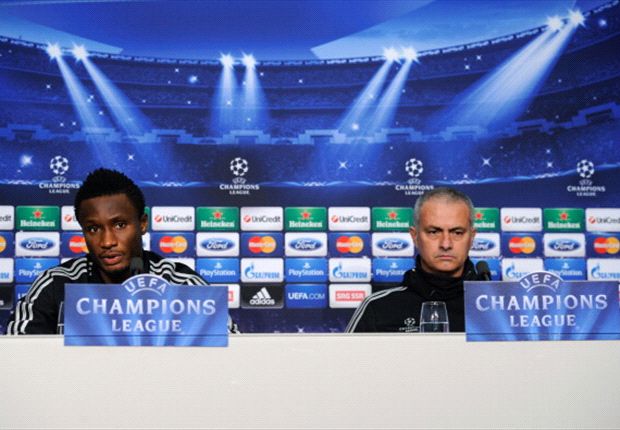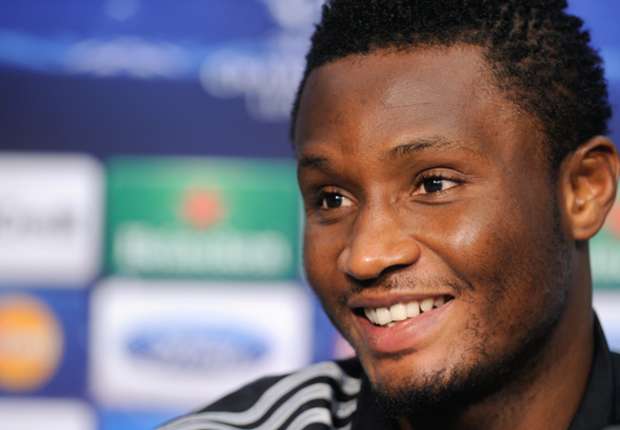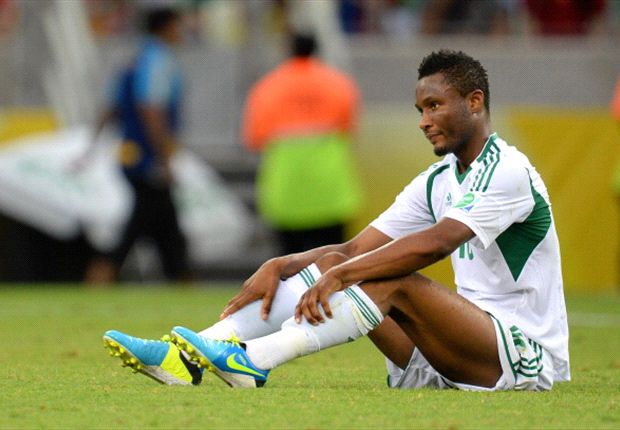
The Chelsea midfielder is often compared to his
contemporaries, his younger self or 'the player he might have been'.
This feature aims to celebrate him in his own right.
FEATURE
BY Sam Praise
BY Sam Praise
Chelsea’s winter purchase of Nemanja Matic has restricted John Obi Mikel to
a bit-part role in the Blues’ team. Once again the perennial cliché of
how Jose Mourinho destroyed the Nigerian’s attacking instincts in
2006 has come to fore.
The irony of the matter however is the
fact that Matic himself was purchased as an attacking midfielder when
he initially joined in 2009, but after two league appearances in
two years, he switched to Benfica where he was utilised as a defensive
midfielder because of his physical qualities. Three years later, Chelsea
had to spend a lot to bring him back to replace Mikel.
Much has being said
about Mikel’s creative instincts at age grade level, but a logical
review of his performances would showcase a player that controlled
Nigeria’s midfield in the mould of Xabi Alonso.
An example was
the late withdrawal of Mikel when Nigeria was up by a goal against
South Korea at the World Youth Championship in 2005. The team lost their
balance, and eventually lost the match by conceding two late goals. His
return to the team ensured more
disciplined midfield performances that almost won the trophy for
Nigeria.
Advocates of Mikel’s ‘suppressed
attacking instinct’ don’t realise that he managed only one goal at that
level, which was a penalty he scored against Switzerland after having
his initial effort saved. This fact indicates how, despite his
qualities, Mikel was never really the conventional Number 10 people
wanted to replace the then-retiring Jay-Jay Okocha. Even at the youth
level his best qualities were his architectural building of attacks,
deep-lying midfield control, and a good knowledge of reading the game
resulting in well-timed tackles and markings.

Mikel | Never Okocha
Despite being the initial option for Sir
Alex Ferguson, it is Michael Carrick who has gone on to excel in a
deep-lying role at Manchester United. Mikel hasn’t managed the kind of
controlled midfield play at Chelsea and yet still,
advocates expect Mikel to have played as a creative midfielder if he had
signed for the Old Trafford outfit, also neglecting the obscure careers
of other African players that played for the Red Devils. The
likes of Eric Djemba-Djemba, Manucho Goncalves and Mame Biram Diouf have
all tried and failed to make an impact at United.
This is not an attempt to
berate Mikel’s attacking qualities, but during the tenures of seven
managers at Chelsea, he has largely featured in the holding role.
Only Mourinho and Rafael Benitez really encouraged Mikel to venture
further than the centre of the field.
Largely, his Chelsea career has been
spent covering for the other midfielders and protecting the
defence. Previous national team managers tried to utilise him as an
attacking midfielder, but they all failed until Stephen Keshi gave him
deeper role in the middle. This encouraged the wingers to take the
responsibilities for attacks, while simultaneously allowing space for
Mikel to execute his penetrating passes and occasionally burst forward.
When Mourinho was asked about his
prodigy being utilised in a defensive midfield role during his first
spell at Chelsea, he replied “that is probably the position he is best
suited for.” That statement is enough proof of halting the debate that
has lasted ever since.

Frustrations | Will they continue for Mikel, or can he find a role for himself?
Mourinho, a manager known for
his ‘results first’ approach to football, has had success from all his
teams by utilising players who probably would have being discarded by
other managers. Michael Essien, for example, played at right
back occasionally for Chelsea, Samuel Eto’o was utilised in a right
midfield role at Inter Milan, while under him, right-back Sergio Ramos
thrived in the heart of defence. Frank Lampard’s current relocation in
the heart of midfield is also a result of Mourinho’s tinkering with
player’s natural positions, so too Cesar Azpilicueta’s reinvention as a
left-back.
Needless to say, all of Mikel’s goals
for Chelsea came during the Mourinho Era and his ‘one-on-one’ goal
against Uruguay might have been unheard of under
previous Nigerian managers. Under both Mourinho and Keshi, it is fair to
assume, Mikel is playing under bosses who know how to get the best out
of him.
Mikel has three basic options moving
forward. He either moves to a club suited to his qualities, or he waits,
patiently, to be appreciated at Chelsea, or, finally, he could adapt
his game to suit the needs of his present club side. A contemporary
example is Yaya Toure, but, considering Mikel lacks the Manchester City
man’s mobility, it’s hard to see this kind of reinvention.
Ultimately, Mikel needs to play to his
strengths. If he can make a success of the rest of his career,
marshalling the midfield with calmness and brains, rather than brawn,
and if he can escape the eternal comparison with the Mikel myth, then
Super Eagles fans might be able to celebrate one of their finest sons.
No comments:
Post a Comment